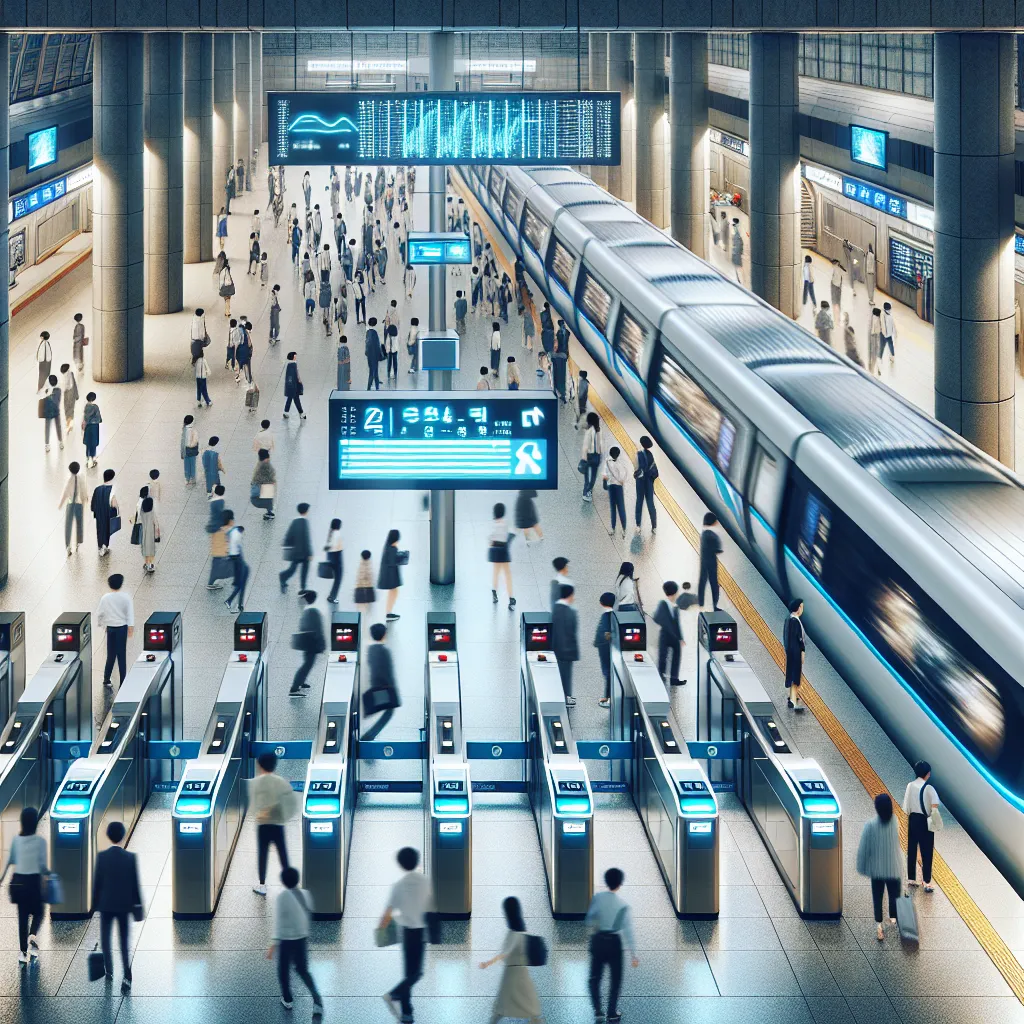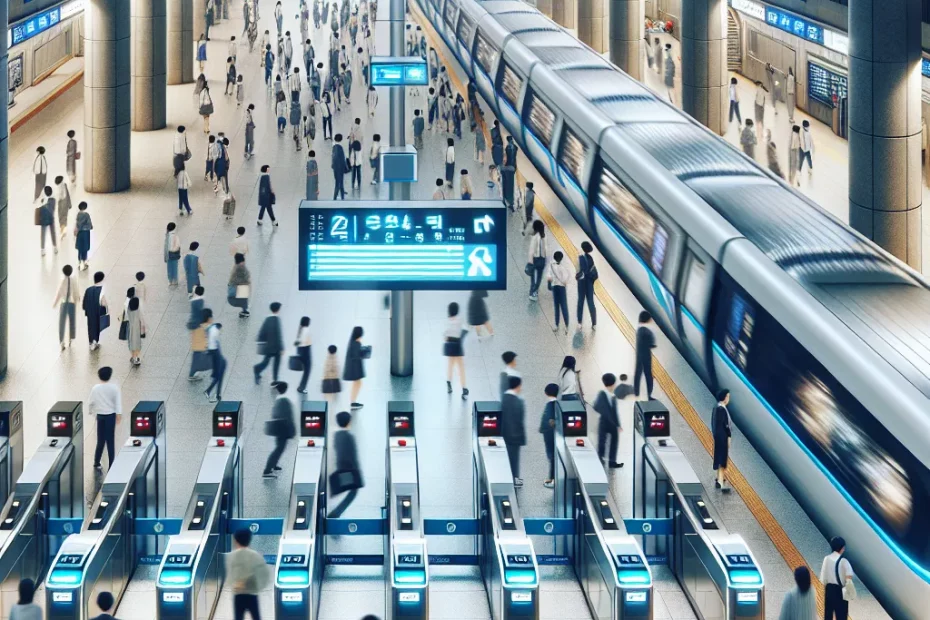Efficient public transportation is a crucial aspect of modern urban life, and Korea stands out as a shining example of a well-organized and technologically advanced system. With efficient routes, timely schedules, and cutting-edge technology, Korean public transportation offers a seamless and convenient travel experience for its citizens and visitors alike. The benefits of utilizing such a system are manifold, ranging from reduced traffic congestion and environmental impact to improved overall quality of life. As we delve deeper into the intricacies of Korea’s public transportation network, we uncover a world where innovation and sustainability converge to create a model that other nations strive to emulate.

Benefits of Using Public Transportation in Korea
Public transportation in Korea is not only convenient but also highly efficient, making it a preferred choice for many commuters. The well-connected network of buses, subways, and trains ensures that people can easily travel to their destinations without the hassle of traffic congestion. 🚌🚇
Cost-Effectiveness
One of the key benefits of using public transportation in Korea is the cost-effectiveness. With affordable fares and various discount options for frequent travelers, taking the bus or subway is much cheaper than driving a car. In fact, a study conducted by the Korea Transport Institute revealed that using public transportation can save commuters up to 70% in transportation costs annually. 💰
Environmental Impact
Moreover, public transportation plays a significant role in reducing carbon emissions and alleviating traffic congestion. The efficient system encourages more people to opt for eco-friendly modes of transport, leading to a decrease in air pollution and a healthier environment for all. 🌿🌏
Punctuality and Reliability
In addition to the environmental benefits, public transportation in Korea is known for its punctuality and reliability. The buses and subways operate on strict schedules, ensuring that passengers can reach their destinations on time. This level of efficiency is reflected in the statistics, with an average on-time performance rate of over 95% across all modes of public transportation in Korea. 🕒
Accessibility
Furthermore, the accessibility of public transportation in Korea is commendable. Most stations and bus stops are equipped with facilities for the elderly and disabled, making it easier for everyone to use the services. The government’s continuous efforts to improve accessibility have resulted in a more inclusive and user-friendly public transportation system. ♿
In conclusion, the benefits of using public transportation in Korea are undeniable. From cost savings to environmental sustainability and accessibility, the efficient system offers a plethora of advantages for commuters. So next time you’re planning your journey in Korea, consider hopping on a bus or train to experience the convenience and benefits firsthand! 🇰🇷🚉
Efficient Routes and Timetables
When it comes to public transportation in Korea, efficiency is key. The well-planned routes and timetables of buses and subways in major cities like Seoul and Busan ensure smooth and timely travel for millions of commuters every day. 🚌⏰
Bus System in Seoul
In Seoul, the bus system operates on a vast network of routes, with each bus displaying its number and destination clearly for passengers. The buses run frequently, with an average interval of 10 minutes during peak hours, reducing waiting times for passengers. 🚍🕒
Subway System in Korea
The subway system in Korea is known for its punctuality and speed. With trains running at intervals of 2-3 minutes during peak hours, commuters can rely on the subway to get them to their destinations on time. 🚇⏱️
Integration of Different Modes of Transport
One of the key factors contributing to the efficiency of public transportation in Korea is the integration of different modes of transport. The seamless transfer system between buses and subways allows passengers to switch between modes with ease, reducing travel time and increasing convenience. 🚎🚇
Advanced Technologies
Moreover, the use of advanced technologies such as real-time tracking systems and mobile apps provides passengers with up-to-date information on routes, timetables, and delays. This transparency enables commuters to plan their journeys more effectively and avoid unnecessary waiting. 📱🗺️
In conclusion, the efficient routes and timetables of public transportation in Korea play a crucial role in ensuring smooth and convenient travel for passengers. By combining well-planned routes, frequent services, and advanced technologies, the public transportation system in Korea sets a high standard for efficiency and reliability. 🌟🇰🇷
Technological Advancements in Korean Public Transportation
Korean public transportation has undergone a remarkable transformation through the integration of cutting-edge technologies. From smart buses to high-speed trains, South Korea has set a new standard in efficient and sustainable urban mobility. 🚌🚆
AI-Powered Bus Systems
One of the most notable advancements is the implementation of AI-powered systems to optimize bus routes and schedules. By analyzing passenger data in real-time, buses can adjust their routes dynamically to avoid traffic congestion and minimize delays. This not only improves the overall efficiency of the public transportation system but also enhances the passenger experience. 🌐📊
Contactless Payment Systems
Moreover, the introduction of contactless payment systems has revolutionized the way people pay for their transportation fares. With the widespread adoption of T-money cards and mobile payment apps, passengers can seamlessly tap and go without the hassle of carrying cash or purchasing tickets. This not only speeds up the boarding process but also reduces the risk of transmission of germs, especially in times of health crises. 💳💰
Korean High-Speed Rail Network (KTX)
In addition to buses, the Korean high-speed rail network, known as KTX, has been a game-changer in long-distance travel. With trains reaching speeds of up to 300 km/h, passengers can travel between major cities in a fraction of the time it would take by car. The integration of advanced safety features and onboard amenities has made the KTX not just a mode of transportation but a comfortable and convenient travel experience. 🚄🕒
Smart Traffic Management Systems
Furthermore, the development of smart traffic management systems has played a crucial role in reducing congestion and improving the overall flow of traffic in urban areas. By utilizing real-time data from sensors and cameras, traffic lights can adjust their timing to optimize traffic flow, reducing travel times and emissions. This holistic approach to transportation planning not only benefits public transportation users but also contributes to a cleaner and more sustainable environment. 🚦🌿
In conclusion, the technological advancements in Korean public transportation have not only revolutionized the way people move around cities but have also set a new standard for efficiency, sustainability, and passenger comfort. By embracing innovation and investing in smart solutions, South Korea continues to lead the way in urban mobility, setting an example for cities around the world to follow. 🇰🇷🌏
Environmental Impact and Sustainability
In the realm of public transportation, the focus on environmental impact and sustainability has become increasingly crucial. As we navigate the challenges of urbanization and climate change, the role of efficient public transportation in promoting a greener future cannot be overstated! 🌿
Sustainability in South Korea’s Public Transportation
In South Korea, the public transportation system stands as a shining example of sustainability in action. With a comprehensive network of buses, subways, and high-speed trains, the country has made significant strides in reducing carbon emissions and promoting eco-friendly travel options. 🌍
Let’s delve into some numbers to truly grasp the environmental benefits of Korea’s public transportation system. Did you know that the Seoul Metropolitan Subway is one of the most extensive and heavily used metro systems in the world, carrying over 7 million passengers daily? 🚇 This means fewer cars on the road, resulting in reduced air pollution and greenhouse gas emissions. 🌬️
Moreover, the integration of technology in Korea’s transportation infrastructure has further enhanced its sustainability. From smart card systems like T-money for seamless transfers between different modes of transport to the implementation of electric buses and hydrogen fuel cell vehicles, innovation plays a key role in minimizing the environmental footprint of public transportation. 🚌⚡
But the commitment to sustainability doesn’t stop there. The Korean government has been actively investing in green initiatives such as expanding bike lanes, promoting walking-friendly urban spaces, and increasing the use of renewable energy sources to power transportation networks. 🚴♂️🌞
By prioritizing environmental impact and sustainability in its public transportation policies, South Korea sets a remarkable example for other nations to follow. The integration of eco-friendly practices not only benefits the planet but also enhances the quality of life for its citizens. 🌟
In conclusion, the efficient public transportation system in Korea serves as a beacon of hope for a more sustainable future. Through a combination of innovation, investment, and a strong commitment to environmental stewardship, the country paves the way towards greener, cleaner, and more livable cities. 🌆 Let’s all hop on board the sustainability train and work together towards a brighter tomorrow! 🚉🌱
Efficient public transportation in Korea offers a multitude of benefits, from reducing traffic congestion to improving air quality. With well-planned routes and timetables, commuters can rely on a streamlined system that gets them to their destinations on time. Technological advancements, such as smart cards and real-time tracking, enhance the overall experience for passengers. Moreover, the emphasis on environmental impact and sustainability ensures that public transportation in Korea remains a viable and eco-friendly option for the future. In conclusion, Korea’s public transportation system stands as a model of efficiency and innovation, setting a high standard for other countries to follow.
